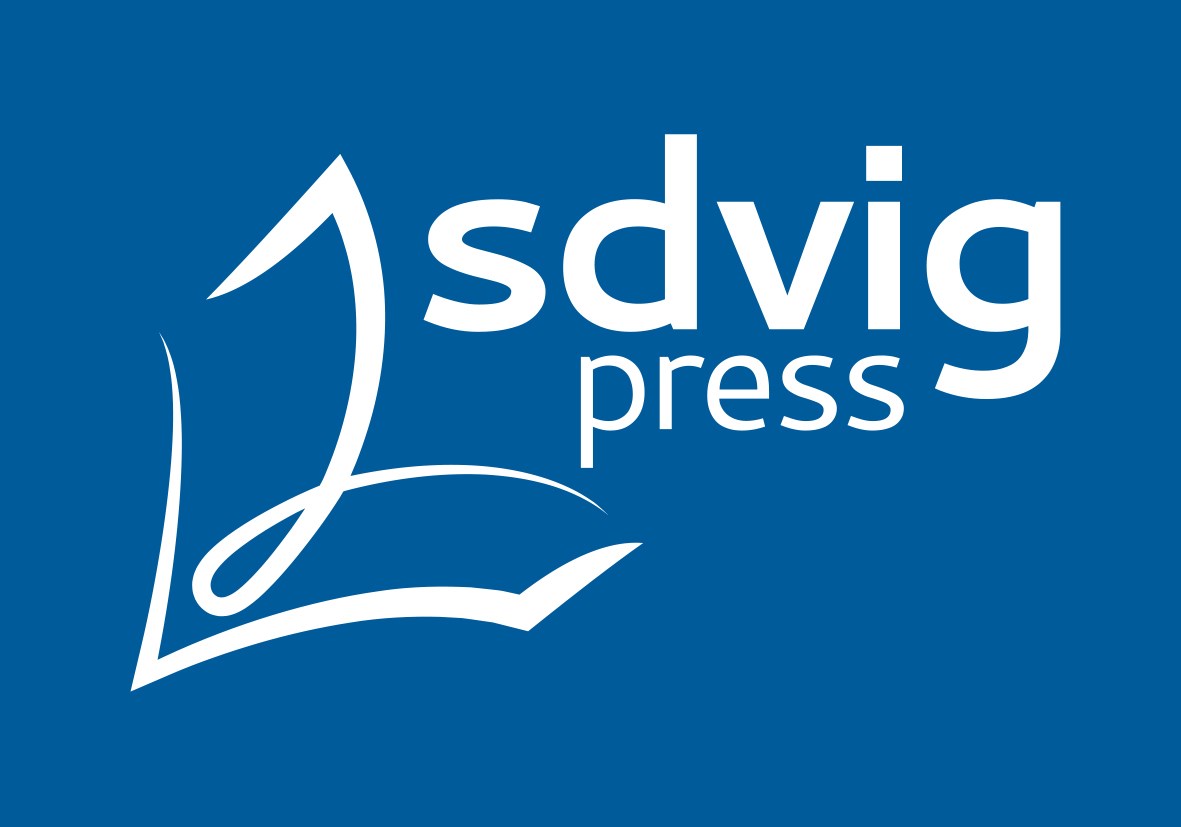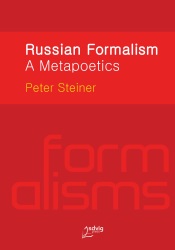This document is unfortunately not available for download at the moment.
Preface
Peter Steiner
pp. 7-12
It has been almost thirty years since this book was published and, as might have been expected, the responses it has received were far from uniform. I myself have questions about some of its conclusions and yet I think that most of its critics have misunderstood my theoretical intentions. No doubt, I am partially to blame for not making my assumptions clear and I would like to take this opportunity to correct some problems.
Not surprisingly, it was the subtitle of the book—A Metapoetics—that has generated most of the disputes. The responses can be reduced to three basic approaches. Is it legitimate to treat the literary-theoretical discourse of the Formalists in terms of poetic tropes? In what sense is my method truly “metapoetic” and how does it differ from any other presentation of Formalist theories within the general frame of intellectual history? And finally, can a tropological typology (however complex) present historical phenomena in the process of their becoming rather than merely providing static slices of this process? In what follows I shall briefly address these issues.
Aside from the general problem of the adequacy of any method to its object, the first question raises the problem of the Formalists’ attitude toward poetic tropes, and this was far from unambiguous. On the one hand, they attacked the psychologism of nineteenth-century linguistics and poetics through its use of tropes, for example, the treatment of the inner form of language as a figurative linkage between linguistic sound and meaning or the definition of poetry as “thinking in images.” Yet on the other hand, some of them (most notably Roman Jakobson) maintained that the synthetic power of linguistic consciousness derives from certain associative principles—similarity and contiguity—that they identified with tropes of metaphor and metonymy. In my own enterprise, I drew inspiration from this Formalist insight into the mechanism of language, extending it to the domain of theory and organizing Formalist discourse around metaphoric and metonymic (synecdochic) poles. The Formalists were not so much hostile to tropes as critical of those who used them sloppily.
As to the general problem of methodological adequacy, I must confess to my profound skepticism on this issue. The relationship between facts and methods is, I believe, quite asymmetrical: the same data can be analyzed from different perspectives and any given approach can be applied to a variety of materials. That is, I consider neither tropology nor my own use of it the only legitimate method for dealing with Russian Formalism or the history of criticism in general. For example, as I illustrated in one of my subsequent essays, I no longer see the mechanistic metaphor as the master figure of Šklovskij’s theorizing. It now appears to me a strategic device, a component in the more complex trope of irony informing Šklovskij’s discourse (Steiner 1986). But as Šklovskij himself put it in his “direct” way: “If the facts destroy the theory, so much better for the theory. We created it; it was not handed down to us for safekeeping” (Šklovskij 1928a, p. 30).
As to the second question—the accuracy of the term “metapoetics” as a characterization of my enterprise and its distinctiveness as a method—I was perhaps wrong to assume that this term was self-explanatory. My understanding of “poetics” was conditioned to a large degree by Aristotle’s fragment on the topic. He regarded poetry as a variety of artistic mimesis and poetics as the discipline concerned with the objects and manners of representation in poetic works. Since my book does not deal with poetic works but literary criticism (i.e., with texts reflecting upon literary texts), I converted Aristotelian poetics into “metapoetics”—the study of the theoretical mimesis of verbal art. And even though this step might appear unwarranted to some scholars, the titles of such influential works as Hayden White’s Metahistory or Richard H. Brown’s A Poetic for Sociology indicate that a self-reflexive attitude toward one’s discipline is an epistemological imperative of our time (Hayden 1973, Brown 1977).
But needless to say, what counts in the metapoetic approach is not the name but how it leads one to process material. The metapoetic orientation has led me to pay minute attention to certain details of Formalist writing usually neglected by scholars subscribing to other research programs, details furnishing valuable clues about the theoretical models of the movement. At the same time, though, I was selective in dealing with the overall intellectual context of Formalism and this selectiveness has provoked criticism. I readily concede that my book pays little attention to some important schools of thought with which Formalism came in contact, but it does so for a reason. My genealogy of Formalism pursues a restricted goal: to identify only those achievements in science, the humanities, and literature that the Formalists transferred to the realm of criticism. Neither the fame nor the position of a given school of thought in Russian intellectual life would compel me to include it, but only its relevance to the poiesis of the Formalists’ criticism, its contribution to the formation of the tropological models that characterize their treatment of literature.
And here we come to my third question: can a tropological typology present the historical unfolding of phenomena or does it merely reduce the process to a static picture? Critics have argued that my typology portrays diachrony as a kaleidoscopic succession of synchronic states, privileging system over change and failing to grasp the movement in its developmental dynamics. This charge would indicate a serious flaw indeed, for I would be a strange student of Slavic literary theory if I had not learned its most elementary lesson: that cultural phenomena are always historical. Since I think that I have learned this lesson, however, what separates me from my critics is the mode I have chosen for portraying the historicity of Formalism. They appear to be committed to a single form for the representation of the past, that of a conventional narrative with an appropriate emplotment. Depending on their temperaments, they might applaud either a tragic script (the rise and well deserved success of the brilliant young scholars, eventually crushed by inexorable fate in the guise of wicked Marxists), or a romance scenario (a few brave believers carrying the ashes of Formalism abroad where the Phoenix of Structuralism miraculously rises to conquer the world), or perhaps a comic emplotment (the self-righteous grande dame Philology is mocked by her appealing but naive offspring; wise Bachtin reprimands the impudent youth while securing a dignified retirement for the old lady, thus achieving a general reconciliation celebrated by a festive carnival to which the audience is cordially invited).
Such narratives have great potential for organizing historical phenomena into credible patterns. Nevertheless, I have refrained from this tempting option. First, I suspect that these narratives are best suited for representing one type of past—the “epic past”—that is, events from which we are more or less detached. By selecting a particular emplotment, the historian provides the past with narrative closure, endowing an expired temporal sequence with a meaning and value for today. However, Russian Formalism does not allow for such splendid isolation. As the literary-critical opening of our era, it is still very much a part of our present. And since only the future will tell us what Formalism as a complete phenomenon was all about, I feel acutely uncomfortable at the prospect of providing the “true” story now.
Secondly, the persuasive power of the conventional narrative rests in its capacity to deliver the past as a linear continuum (within the sequence, events follow each other in a deliberate direction). Once again, my understanding of Formalism precludes such a neat narrative streamlining. The advent of Formalism was not a gradual process (whether of erosion or accretion) but a radical rupture in the intellectual tradition with ragged historical edges where the past and the future intersect. Formalists could carry out this revolution because of the peculiar nature of their theorizing. What is most striking about their discourse is its utter disunity, the clash within it of theoretical models derived form a variety of different, often incompatible sources. The historical trajectory of Formalism resembles not an orderly progression from one state to another but the dizziness of a Brownian movement. The straitjacket of conventional narrative would not tame but kill this wild beast.
By saying this, however, I do not wish to imply that Russian Formalism cannot be treated diachronically. Rather, its historicity should be expressed in a form other than conventional narrative—in a metapoetics. Metapoetics is predicated on diachrony in that it implies two temporally distinct positions, two utterances in dialogic relation. In the case of this book, the relation is directly historical because my reinscription of Formalist texts is refracted through prior commentaries on the subject. From this perspective, the “making” of history takes the form of an ongoing dialogue through which we reiterate the same as different and the different as same and in which we willingly participate as long as Russian Formalism is part of the present—as long as we are still interested in it.
This dialogic principle has guided my reconstruction of Formalist theorizing. The tropes into which I articulated Formalist discursive practice appear static only if extracted from the dynamism of their historical context, the dialogic situation that generated them. Their heuristic value consists of nothing less than their ability to refute, correct, or supplement the explanatory models propounded by other students of literature, whether friends or foes. The history that my tropological method projects is therefore discontinuous and nonlinear, but not devoid of change. It casts the process of historical becoming in the form of a collective dialogue, an interplay of temporality (the intervals between the questions the Formalists asked about literature and the replies they provided), and simultaneity (the multiplicity of questions posed and the variety of replies offered to these).
This is my answer to criticism that I regard as unsubstantiated and brief account of the assumptions that underlie my book. Yet, I would be patently naive if I believed that such an explanation would mollify my critics and guarantee clear sailing for Metapoetics. That would depend, instead, on quite different factors. As the Formalist Boris Kušner wrote of his own work, “However flawed the system of my arguments might be, even if I spoke in utter paradoxes and contradicted myself at every step, my ideas will be accepted, affirmed, and promulgated if contemporaries find them attractive and useful. And no iron logic will save my thought if nobody needs it and it evokes in nobody the feeling of joyful wonder or of pleasant satisfaction” (Kušner 1917, p. 73). To use a more domestic idiom, the proof of the pudding is in the eating and not in the directions on the box.



